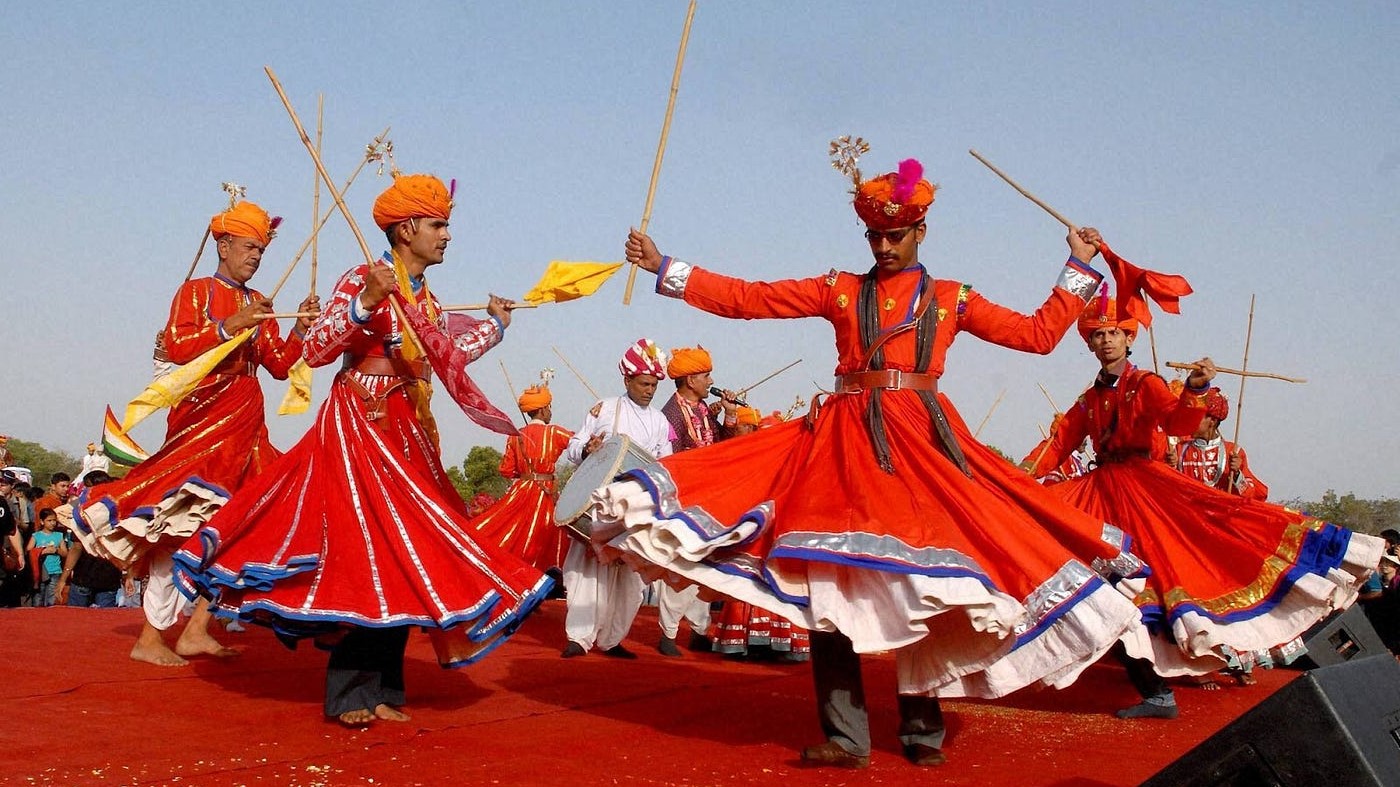Hidden Gems Of Rajasthan’s Folk Dances You Might Not Know

Rajasthan, known for its vibrant culture, offers more than just stunning palaces and deserts. Have you ever wondered about the hidden gems of Rajasthan's folk dances? These traditional dances, passed down through generations, tell stories of bravery, love, and everyday life. From the energetic Ghoomar to the mesmerizing Kalbelia, each dance has its unique charm. The colorful costumes, rhythmic music, and graceful movements make these performances unforgettable. Whether you're a dance enthusiast or just curious about different cultures, Rajasthan's folk dances provide a fascinating glimpse into the state's rich heritage. Ready to learn more about these captivating art forms?
The Enchanting World of Rajasthan's Folk Dances
Rajasthan, known for its vibrant culture, offers a rich tapestry of folk dances. These dances, often performed during festivals and celebrations, tell stories of the land's history and traditions. Let's dive into some lesser-known gems that you might not have heard of.
Ghoomar: The Graceful Spin
Ghoomar, a traditional dance of the Bhil tribe, has become synonymous with Rajasthani culture. Women in colorful ghagras (skirts) perform this dance, spinning gracefully to the rhythm of folk songs.
- Origin: Bhil tribe, adopted by Rajputs.
- Attire: Colorful ghagras, cholis, and odhnis.
- Occasions: Festivals, weddings, and special events.
- Music: Traditional folk songs with dhol and manjira.
Kalbeliya: The Serpent Dance
Kalbeliya dance, performed by the Kalbeliya tribe, mimics the movements of a serpent. Known for its fluidity and grace, this dance is a mesmerizing sight.
- Origin: Kalbeliya tribe, known for snake charming.
- Attire: Black swirling skirts with colorful embroidery.
- Occasions: Cultural festivals and fairs.
- Music: Pungi, dholak, and khanjari.
Bhavai: The Balancing Act
Bhavai is a folk dance that showcases incredible balancing skills. Performers dance while balancing multiple pots on their heads, creating a thrilling spectacle.
- Origin: Rural areas of Rajasthan.
- Attire: Traditional Rajasthani costumes.
- Occasions: Fairs, festivals, and cultural programs.
- Music: Harmonium, dholak, and sarangi.
Terah Taali: The Rhythmic Dance
Terah Taali is a devotional dance performed by the Kamad community. Dancers tie thirteen manjiras (small cymbals) to their body and play them while dancing.
- Origin: Kamad community.
- Attire: Bright, traditional costumes.
- Occasions: Religious ceremonies and festivals.
- Music: Manjiras, dholak, and harmonium.
Kachhi Ghodi: The Horse Dance
Kachhi Ghodi is a dance performed by men wearing horse costumes. It narrates tales of local bandits and heroes, making it both entertaining and educational.
- Origin: Shekhawati region.
- Attire: Horse costumes, traditional attire.
- Occasions: Weddings, festivals, and cultural events.
- Music: Flute, dhol, and harmonium.
Gair: The Warrior Dance
Gair is a traditional dance performed by men during the Holi festival. With its powerful movements and vibrant costumes, it represents the valor of Rajasthani warriors.
- Origin: Mewar region.
- Attire: Colorful turbans, dhotis, and kurtas.
- Occasions: Holi festival and other celebrations.
- Music: Dhol, nagada, and shehnai.
Chari: The Fire Dance
Chari dance involves balancing brass pots with burning cottonseeds on the head. This dance, performed by women, symbolizes joy and celebration.
- Origin: Gujjar community.
- Attire: Traditional Rajasthani dresses.
- Occasions: Weddings, festivals, and special events.
- Music: Dholak, harmonium, and nagada.
Maand: The Royal Dance
Maand is a sophisticated dance form that originated in the royal courts of Rajasthan. It combines elements of classical music and dance, showcasing the elegance of Rajasthani culture.
- Origin: Royal courts of Rajasthan.
- Attire: Regal costumes, often with intricate embroidery.
- Occasions: Royal events, cultural festivals.
- Music: Sarangi, tabla, and harmonium.
Embracing Rajasthan's Folk Dance Heritage
Rajasthan's folk dances offer a vibrant glimpse into the state's rich culture. From the energetic Ghoomar to the soulful Kalbelia, each dance tells a unique story. These performances are not just entertainment; they are a way to preserve traditions passed down through generations. Experiencing these dances firsthand can deepen your appreciation for Rajasthan's heritage. Whether you visit during a festival or a local event, witnessing these dances is a must. They connect you to the heart of Rajasthan, making your trip unforgettable. So next time you plan a visit, make sure to include a folk dance performance in your itinerary. It’s a beautiful way to connect with the local culture and create lasting memories. Rajasthan's dances are more than just steps; they are a celebration of life, history, and community.

